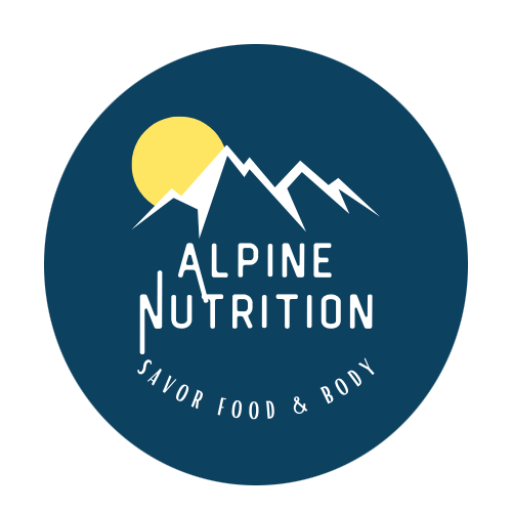“I feel like a cloud has been lifted.” Said Kathy (not her real name) after a nutrition counseling session on how she could support her heart health and brain health at the same time during perimenopause.
That’s the best part of my job. Lifting clouds from women’s relationship with food and their body while improving their health. How?
I help women over 40 make food less complicated, more fun, and satisfying by “showing up, thinking about it (but not too hard), and giving a shit.” (advice from The Bike Guy).

Here’s how to boost your heart and brain health after 40 without being obsessive.
The research on cardiovascular health in women during the menopause transition (perimenopause) is limited. However, there is enough evidence to make a case for the benefits of lifestyle behaviors like movement, stress management, and heart-healthy eating. Here’s what we know.
Most women experience increased blood lipids including total cholesterol, LDL, and apolipoprotein B levels between one year before their final menstrual period and one year after. This association seems independent of aging and is more likely tied to the decline of estrogen.
Other cardio-metabolic factors like blood pressure, blood sugar levels, and insulin response are not linked to menopause hormone changes, but the prevalence of metabolic syndrome (elevated cholesterol, blood pressure, and blood sugar) appears to increase with menopause.
One study showed an increase in the severity of metabolic syndrome more so during reproductive years and perimenopause rather than post-menopause. Which means early prevention is key.
4 Ways to support your heart health after 40
You’ve heard me say this before. Think about what you can add rather than take away from your meals and snacks to support heart health.
An expansive mindset is less limiting, promotes freedom and satisfaction with food, and decreases food shame. Here are some add-ins to consider.
- Mindfulness with fiber. Aim for around 25 grams of fiber most days. It can be helpful to front-load your day with complex carbs like oatmeal, whole grain toast, berries or other fruit, greens, and veggies in scrambled eggs, or a couple of tablespoons of ground flaxseed or chia seed in your oatmeal or a smoothie.
- Get to know fats. Not all fats are created equal because of their chemical structure. This affects how your body responds to them. Unsaturated fats are more fluid in your body and less likely to clog arteries. There are mono and polyunsaturated sources of fats.
Monounsaturated fats include avocado, olives, and olive oil.
The Mediterranean Diet has been associated with reduced cardiovascular disease risk for women by 24%!
Polyunsaturated fats include omega-3 fats like salmon, walnuts, flaxseed, hemp seeds, and chia seeds. Polyunsaturated fats also include omega-6 fats like canola oil, sunflower oil, sesame oil, and other vegetable oils.
Saturated fats are more rigid in their chemical structure which makes them more sticky in your blood and arteries. These include butter, lard, coconut oil, palm oil, and cocoa butter. Diets higher in saturated fats can lead to a higher risk of cardiovascular disease by about 23%.
- Don’t be a lazy chef! When it comes to flavor and satisfaction with meals, choose herbs, spices, and finishing salts or condiments to boost flavor instead of relying on sugar, fat, and salt.
For example choose salty ingredients like fermented vegetables, miso, and finishing salts to season food well and add depth of flavor without increasing the sodium content of the meal.
- Find time to move. Meta-analysis studies on the impact of physical activity have shown a 14-20% lower risk of coronary artery disease in people who exercise 150-300 minutes per week at moderate intensity, meaning you can talk but not sing your favorite song from the 90s.
What types of movement do you enjoy? Add exercise to your day when possible – even for 5, 10, or 15 minutes! Choose an amount you can be consistent with regardless if it feels like you’re not doing enough. When you’re consistent, you’ll see benefits over time.

Are heart health and brain health related?
After age 40 consistency matters when it comes to any health-promoting behavior change. This is why simplifying to amplify is so important.
For example, if you pick 3 behavior-based goals to improve your heart health, you will also improve your brain health at the same time. How cool and efficient is that?
According to Dr. Annie Fenn MD, author and creator of The Brain Health Kitchen, “What’s good for your heart is good for the brain.” The LDL, or lethal, type of blood cholesterol increases your risk not only for heart disease but also Alzheimer’s.
LDL creates inflammation inside blood vessels, which leads to more blockages in the larger blood vessels and puts smaller blood vessels at risk for collapse, cutting off the blood flow to the brain.
You can reduce your LDL cholesterol levels by limiting saturated fats and focusing on mono and polyunsaturated fats like olive oil, salmon, walnuts, avocados, hemp, and flax seeds in your meals and snacks.
Listen to my interview with Dr. Annie Fenn MD on the Savor Food and Body Podcast to learn which 10 foods improve cardiovascular and brain health, in the same delicious meals.
Want to improve your heart and brain health with behavior-based nutrition goals? Add your name to the waitlist for my new 4-week intuitive eating course.
The course will walk you through the step-by-step approach I created for my 1:1 clients to help them get out of the diet cycle and quickly make confident food choices that align with their “why.”




